How Do You Feel About Anime Character Changing Design
27 top character design tips
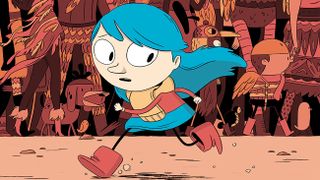
The process of tackling character design is frequently full of hurdles. You demand a whole lot of creative thinking to create your ain character from scratch, although many of the well-known characters from cartoons, advertisement and films wait straightforward. Actually, a vast amount of try and skill will take been exerted to brand them so constructive.
From Mickey Mouse's famous three-fingered hands (fatigued to speed up production when he was start developed for animations in the 1920s), to the elegant simplicity of Homer Simpson, creating character has always been about keeping it unproblematic. To explore these, and other iconic characters, further, see our guide to Disney Plus).
- Get Adobe Creative Cloud (opens in new tab)
But what do you demand to consider for your character pattern? Aside from make clean lines and easily readable features, there's knowing what to exaggerate and what to minimise, how to give a hint of depth and background and what to practise to develop personality.
Then, of grade, there's the affair of the technicalities of how to draw your graphic symbol pattern. If information technology'due south going to exist used in motility or as part of a comic strip, you'll demand to make certain it works from any angle.
For this commodity, we asked a range of leading artists and illustrators their communication on creating memorable, unique character designs. Many of these tips come from Pictoplasma (opens in new tab), an almanac character design festival in Berlin.
Tips for bright character design
01. Don't lose the magic
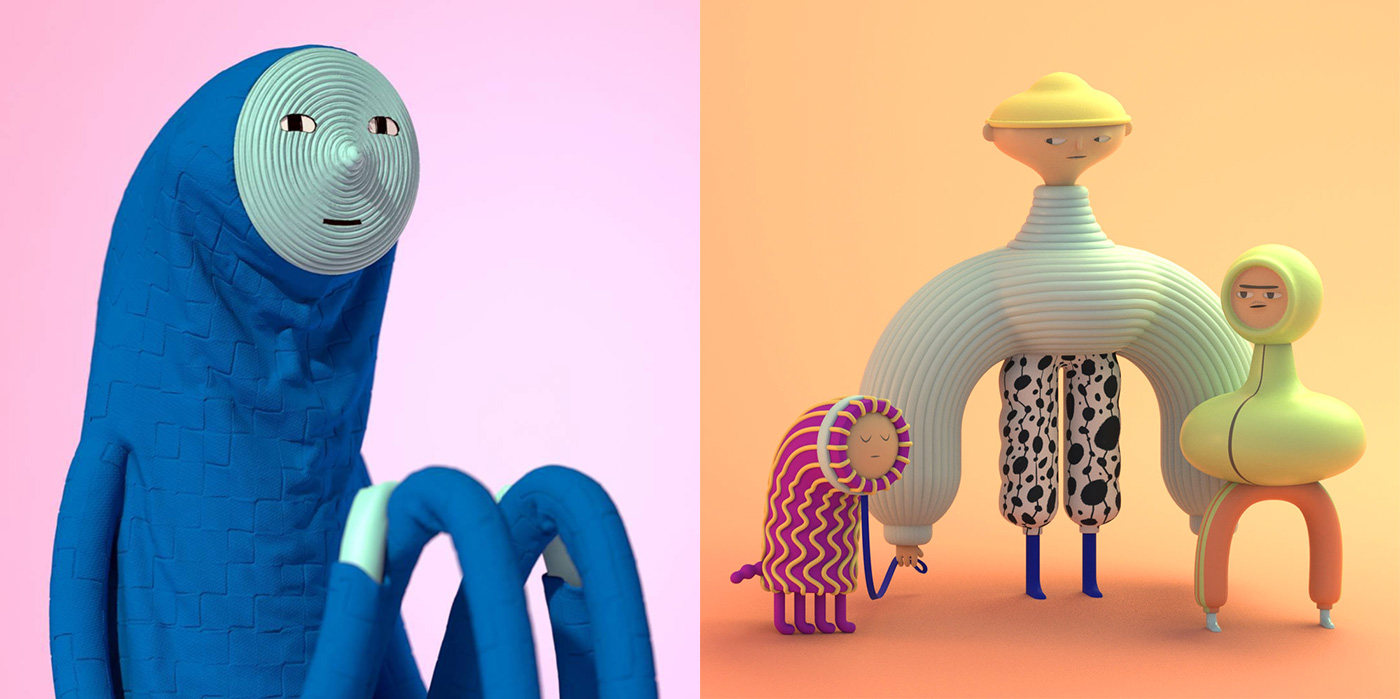
Many character designers will start their projection with a sketch. And about concur designers agree this is oft where the essence of the character is captured. So when yous're working up your pattern, brand sure yous don't lose that magic.
"I try to stick to my original cartoon style, because the instinct is to try and make clean it up," says Laurie Rowan (opens in new tab). "I don't like to feel like I've created past characters; I like to feel similar I've kind of only encountered them."
"When starting out on your character design, don't get caught up in the details," says Pernille Ørum (opens in new tab). "Make up one's mind what you're trying to communicate, then create loose sketches with movement, interim and flow. As shortly as you start to tighten up the drawing, you'll automatically lose some of the dynamic, and then information technology's important to have as much life in the early stages as possible. Movement is all just incommunicable to add later, so make sure it's in the initial sketch."
02. Stride away from the reference material
While inspiration needs to come up from somewhere, the aim is to create something original. So Robert Wallace – known as Parallel Teeth (opens in new tab) – suggests not having the reference material right in front of yous as you lot work.
"If yous look at something and then yous try and hazily retrieve it in your heed, that's when you lot stop upwards making something new, rather than a pastiche of something," he says. Above y'all can meet Wallace'southward new take on well-known festive figures, created for a Hong Kong department store.
03. Enquiry other characters
For guidance, it can be helpful to endeavor and deconstruct why certain character designs work and why some don't. At that place's no shortage of inquiry material to be found, with illustrated characters appearing everywhere: on TV commercials, cereal boxes, store signs, stickers on fruit, animations on mobile phones, and more than. Study these character designs and think nearly what makes some successful and what in detail you like about them.
"When you piece of work with characters you need to exist inspired," advises Ørum, "and you can do this through research. Your mind is a visual library that you can make full. Try to notice people around you – how they walk, their gestures, how they clothes – and use that in your pattern."
04. ... but also look elsewhere
It's likewise a skilful idea to look across grapheme designs when hunting for inspiration. "I like birds' mating rituals a lot," laughs Rowan. The odd movements can spark unique graphic symbol behaviour.
"When I begin a project, I frequently kickoff with the feeling I want to evoke," he adds. The process begins with the designer taking videos of himself every bit a reference, trying to capture something of the graphic symbol idea'south motion or posture.
Other inspirations include ceramics – an organic texture and muted color palette cease his piece of work feeling besides clinical – and folk costumes.
05. Don't lose sight of the original idea
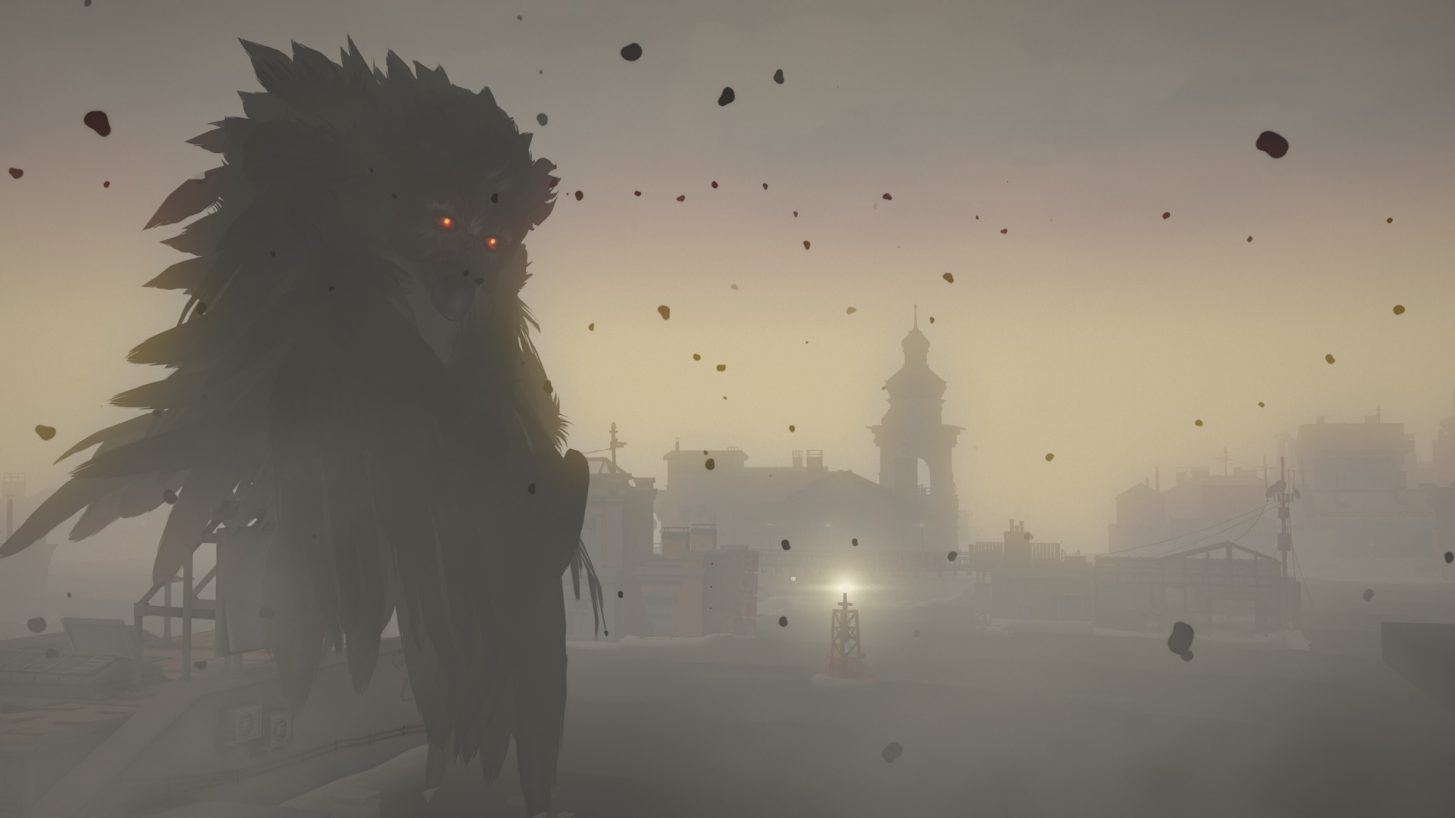
It'southward piece of cake to subconsciously let our favourite designs influence united states. Cornelia Geppert, CEO of indie games studio Jo-Mei (opens in new tab), is a huge fan of The Last Guardian, with its unique artful and great video game character designs.
At one indicate i of her squad members had to say to her that their Bounding main of Solitude design was looking a little likewise similar to The Last Guardian. She looked dorsum at her initial artworks, and it brought dorsum the feeling she had when creating them. The project shifted back on track.
06. Exaggerate
Exaggerating the defining features of your graphic symbol pattern volition assist it appear larger than life. Exaggerated features will also assistance viewers to identify the character's fundamental qualities. Exaggeration is fundamental in cartoon caricatures and helps emphasise certain personality traits. If your grapheme is potent, don't merely give it normal-sized bulging arms, soup them upward so that they're 5 times as big equally they should be.
The technique of exaggeration can be applied to characteristics, too. Anna Mantzaris (opens in new tab)' hilarious Plenty pic (above) shows everyday characters in mundane situations, doing the things we've all dreamed of doing on a bad twenty-four hours. "I remember it's fun with animation that you tin can push things further, and people volition still accept information technology as real," she says. "With alive action it would look absurd. You can also push the emotion farther."
07. Decide who your character design is aimed at
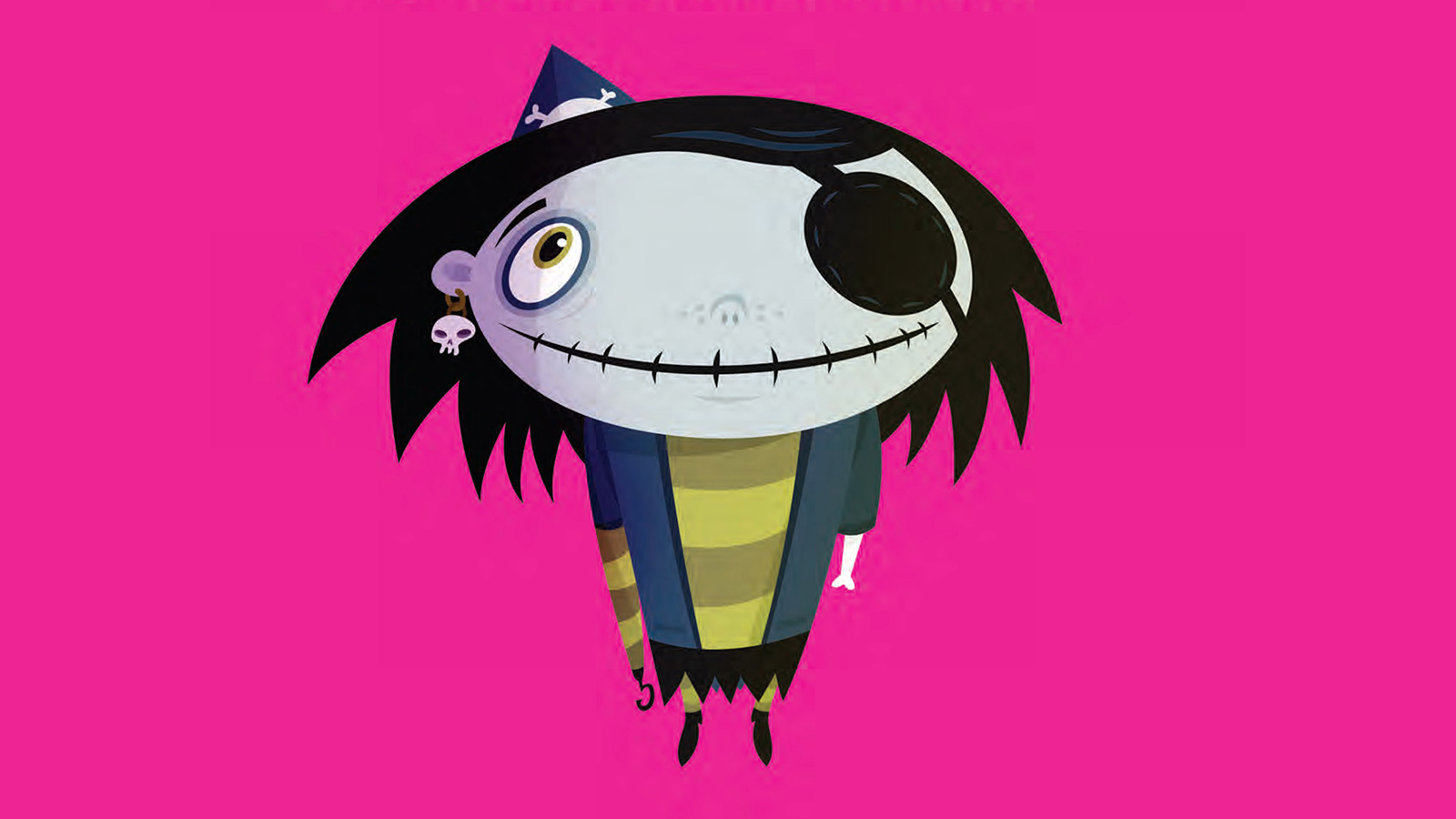
Recollect most your audience. Character designs aimed at young children, for example, are typically designed around bones shapes and bright colours. If you're working for a client, the character'south target audience is commonly predetermined, equally Aussie artist Nathan Jurevicius (opens in new tab) explains.
"Commissioned character designs are usually more restrictive but no less creative. Clients have specific needs but too want me to do my 'matter'. Usually, I'll break down the core features and personality. For example, if the optics are important and then I'll focus the whole design around the face, making this the key feature that stands out."
08. Make your character distinctive
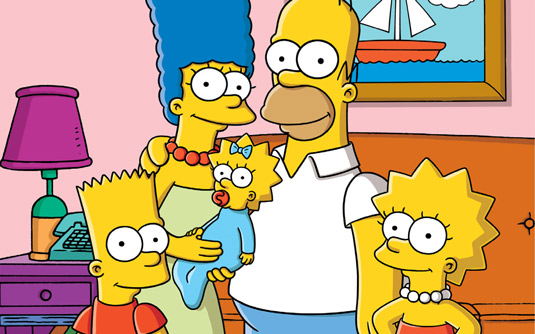
Whether you're creating a monkey, robot or monster, you lot can guarantee there are going to exist a hundred other similar creations out there. Your character blueprint needs to be strong and interesting in a visual sense to get people's attending.
When devising The Simpsons, Matt Groening knew he had to offer the viewers something unlike. He reckoned that when viewers were flicking through Television channels and came across the show, the characters' unusually bright xanthous peel colour would grab their attention.
09. Create clear silhouettes
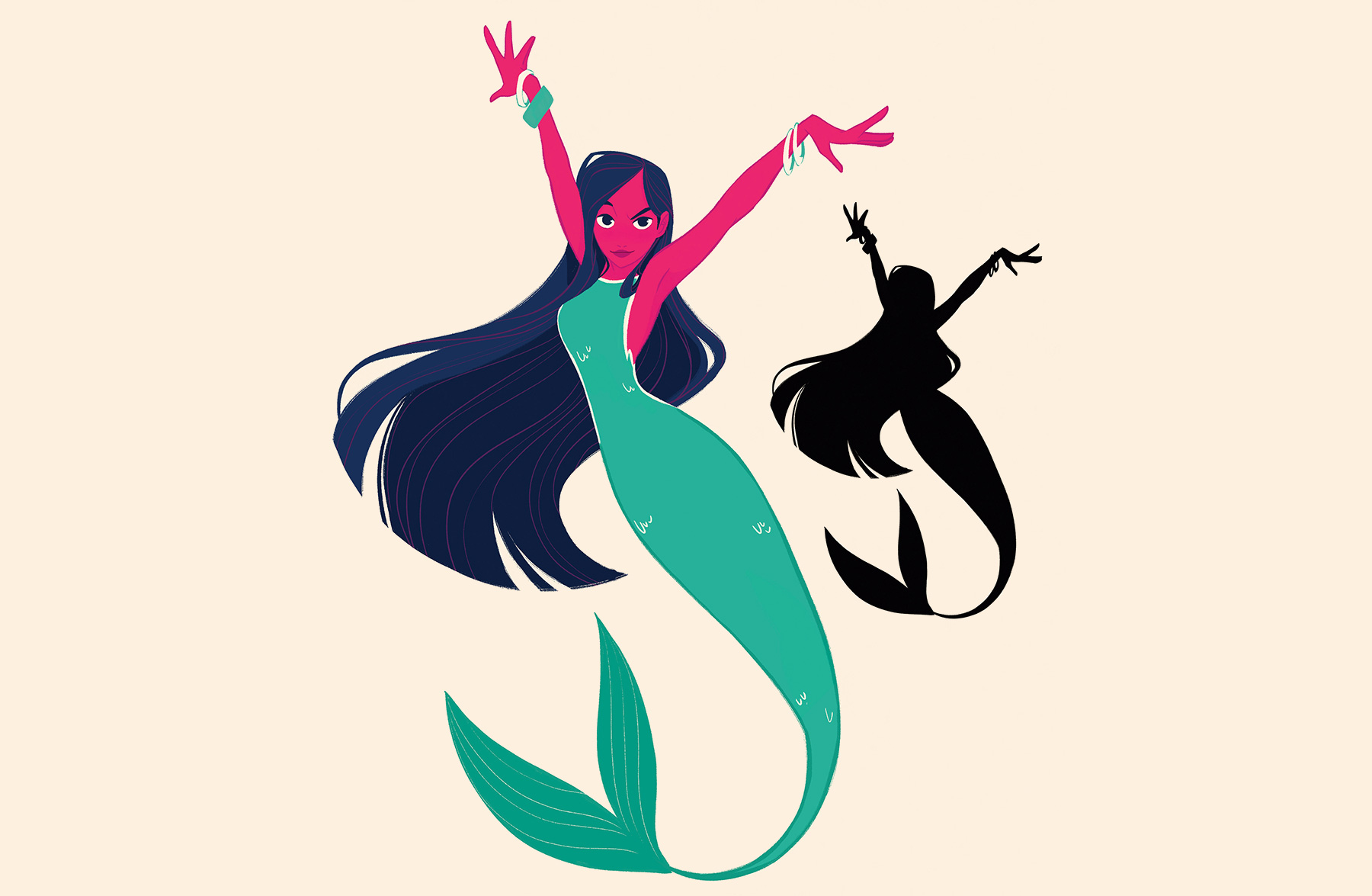
Another good way to make your character distinct and improve its pose, says Ørum, is to turn it into a silhouette. "And then you tin see how the character 'reads' and if you need to make the gesture more clear. Do you empathize the emotion of the graphic symbol and run across the line of action? Tin can things be simplified? Endeavour not to overlap everything, and continue the limbs dissever."
07. Develop a line of action
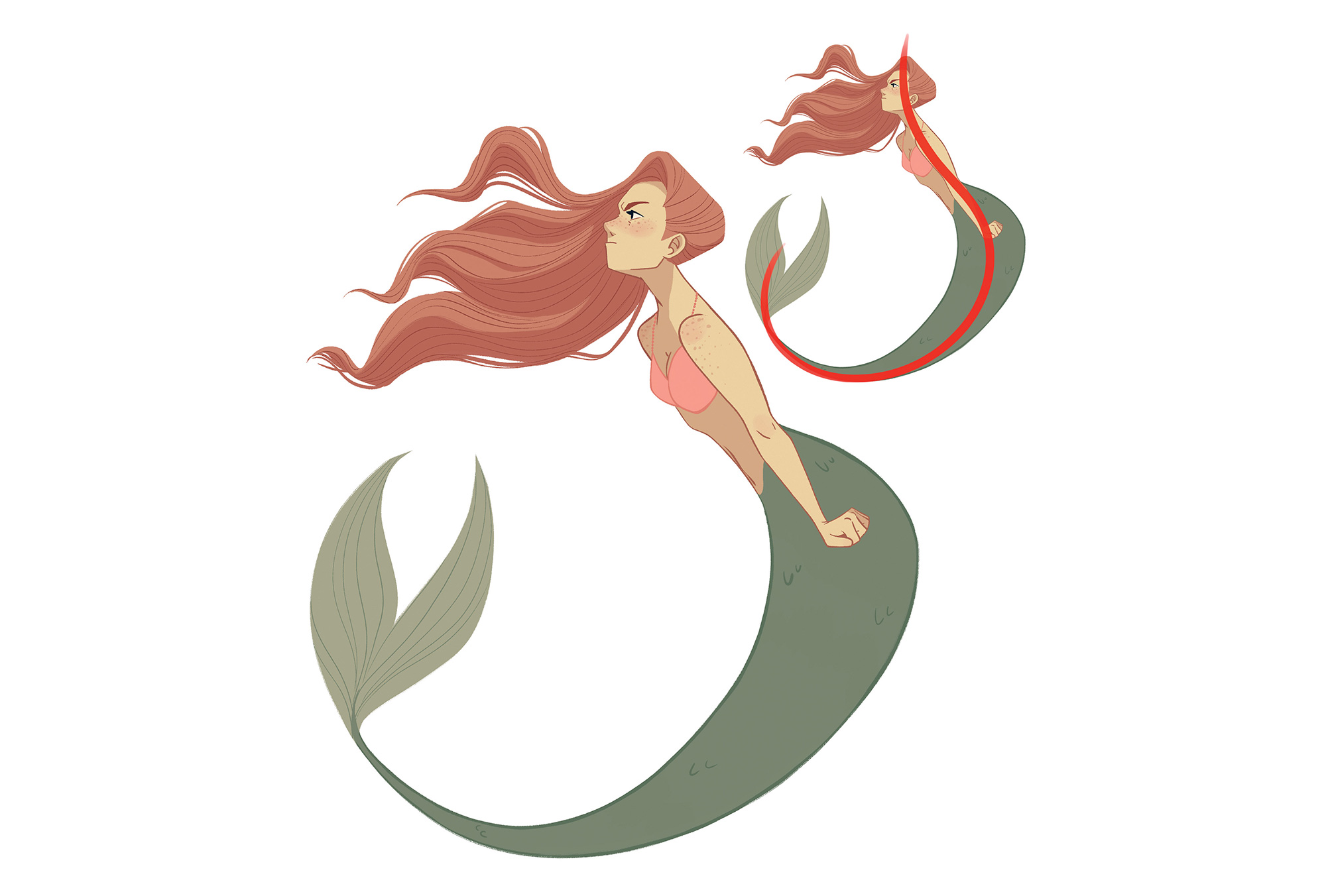
One key aspect to consider when creating a character pattern is the line of action. This is what defines the management of your graphic symbol, equally well as being a useful narrative tool and bringing a feeling of move.
"Try to bring the line of action all the way out to the extremities," says Ørum. "A ballet dancer is a good example: they emphasise the line from the tips of their toes to the tips of their fingers. The line of action is likewise easier to see in creatures with fewer limbs, which is why mermaids are an ideal field of study for developing a strong line of action."
08. Make it personal
Geppert'south Sea of Confinement video game is an exploration of her experiences of loneliness. Intensely personal though it may be, the game hit a chord with audiences when it was previewed at E3 before in the year, because information technology deals with an feel that is then universal yet withal strangely taboo.
"The best art is based on personal experiences. People can relate better if it'south based on the truth," says Geppert. "Information technology's not a made-upward story, even though it's based in a fantastical setting."
09. Detect the posture get-go
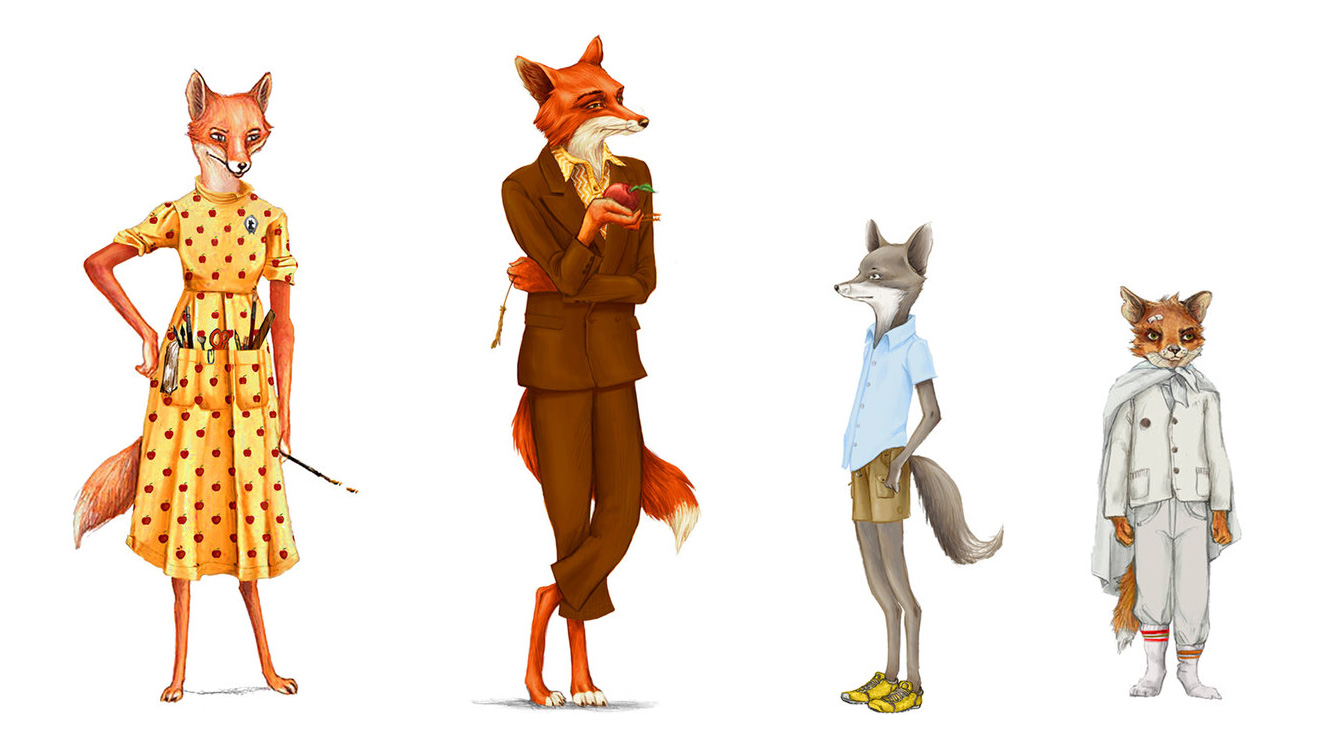
Félicie Haymoz (opens in new tab) has worked with Wes Anderson on both of his animated features: Fantastic Mr Fox and Isle of Dogs. When embarking on a new character design, Haymoz likes to commencement by finding the private's posture. This element can start the brawl rolling on the whole experience of the personality. "I try to capture the stance of the character. Are they hunched over, or are they sitting directly and proud?" She also notes the confront is of import to get right.
Read more than of Haymoz'southward film character tips here.
10. Consider line quality
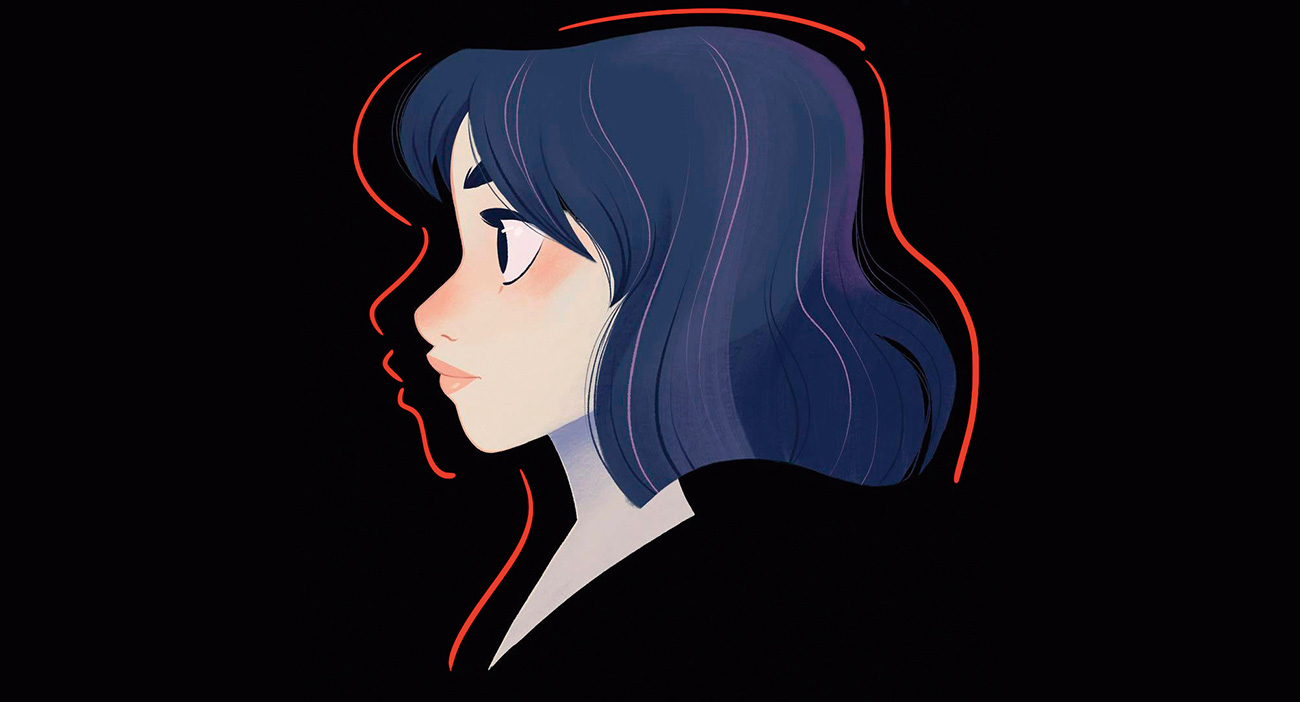
The drawn lines of which your character pattern is composed can become some way to describing it. Thick, even, soft and round lines may suggest an approachable, cute character, whereas sharp, scratchy and uneven lines might point to an uneasy and erratic graphic symbol.
Ørum recommends balancing direct and curved lines. "Straight lines and curves gives your character blueprint a rhythm. A direct line (or a simple line) leads the middle quickly, while a curved (or detailed line) slows downwards the eye.'
Information technology's also worth because the remainder between stretch and pinch. "Fifty-fifty a neutral pose can lead the eye by applying these two approaches, resulting in an effective grapheme blueprint," says Ørum.
11. Use a joke structure
Rowan grew a proper noun for himself by sharing humorous clips of his characters on Instagram, and went on to piece of work on projects for Disney, the BBC and MTV, and earned himself a BAFTA laurels and nomination in the process. However, it was his less successful years doing standup comedy that provided inspiration for his trademark character animations.
"It's through standup I learned brevity. It's kind of a joke structure," he explains. Knowing how to frame the clip comes from past failures and successes on stage: "You very quickly larn how to hit certain points," he laughs.
12. Keep information technology unproblematic
Also as knowing when to exaggerate, Ørum is also keen to highlight the importance of simplicity. "I ever try to communicate the designs with the fewest lines possible. It doesn't mean that work hasn't been put into creating the volume, placement and design of the graphic symbol, but I try to simplify equally much as possible and only put down the lines and colours that conveys the necessary data."
13. Consider all the angles
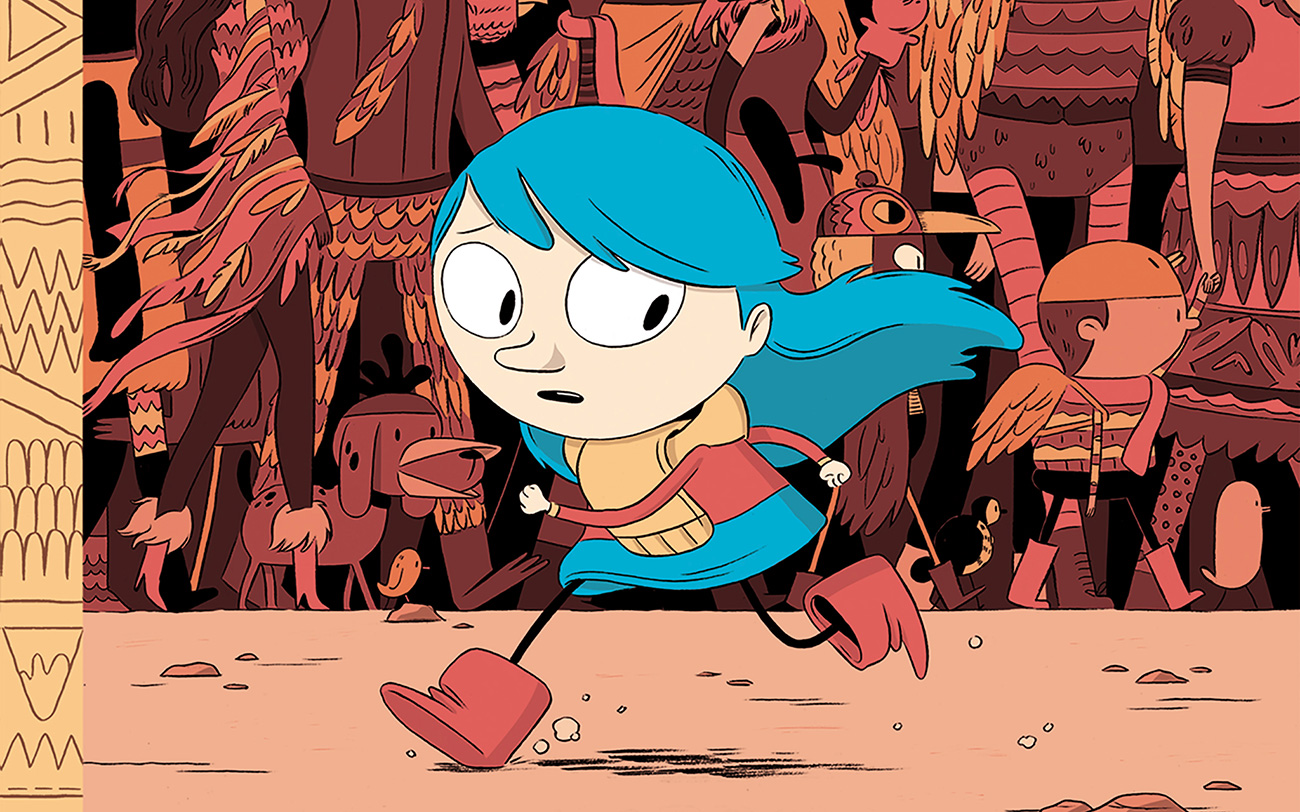
Depending on what y'all have planned for your graphic symbol design, you might need to work out what it will expect like from all angles. A seemingly apartment character can have on a whole new persona when seen from the side if, for example, it has a massive beer abdomen.
In the Character Design Crash Course workshop at Pictoplasma 2019, Jurevicius and Rilla Alexander asked attendees to sketch their graphic symbol in poses held by other attendees, life drawing style.
And if you're going to turn information technology into a comic strip, a la Luke Pearson's Hilda, it'll need to not merely make sense from all angles, only await good too.
"How to draw Hilda from backside without her hair swallowing her silhouette", how to describe her beret from to a higher place; a long and drawn out boxing with how her nose should expect… these were all issues Pearson had to deal with when creating his graphic symbol. The bug all ultimately led to pattern solutions.
fourteen. Build information technology in 3D
If your character is going to exist within a 3D world, equally an blitheness or even as a toy, working out its acme, weight and physical shape is all important. Alternatively, get ane pace further and create a model.
"Even if you're not someone who works in 3D, you can learn a lot past converting your character into three dimensions," says Alexander. It's a key part of the process the students follow at the Pictoplasma University.
15. Choose colours advisedly
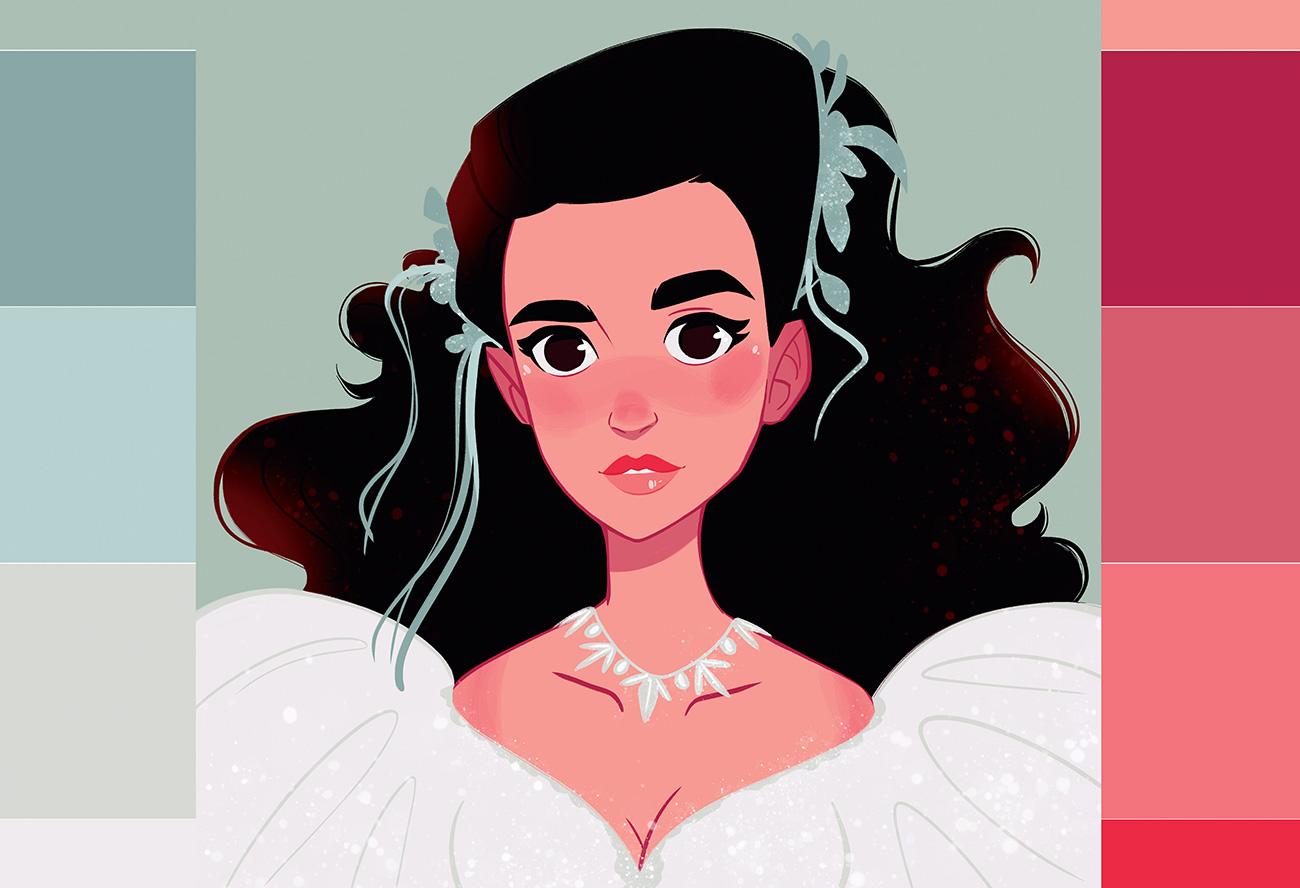
Colours tin can help communicate a graphic symbol's personality. Typically, nighttime colours such as blackness, purples and greys depict baddies with malevolent intentions.
Light colours such as white, dejection, pinks and yellows express innocence and purity. Comic-book reds, yellows and dejection might go some manner to giving hero qualities to a character design.
"To choose effective colours, information technology'south important to understand the bones rules of colour," explains Ørum. "Become familiar with the primary, secondary and 3rd colours, also as monochromatic and complementary colours. I technique for generating an effective colour palette is to chose two complementary colours and work with them in a monochromatic color scheme."
"You lot'll create residuum because complementary colours create dynamism, while monochrome colours invoke feelings of at-home. You could also try a third colour scheme, which adds a third colour (for case, violet, orangish and green), and and then work with monochromatic versions of those colours, but it demands more planning and skill for it to work well. If you lot're new to colour, effort and keep information technology simple."
To read more than on this, encounter our post on colour theory.
16. Don't forget the hair
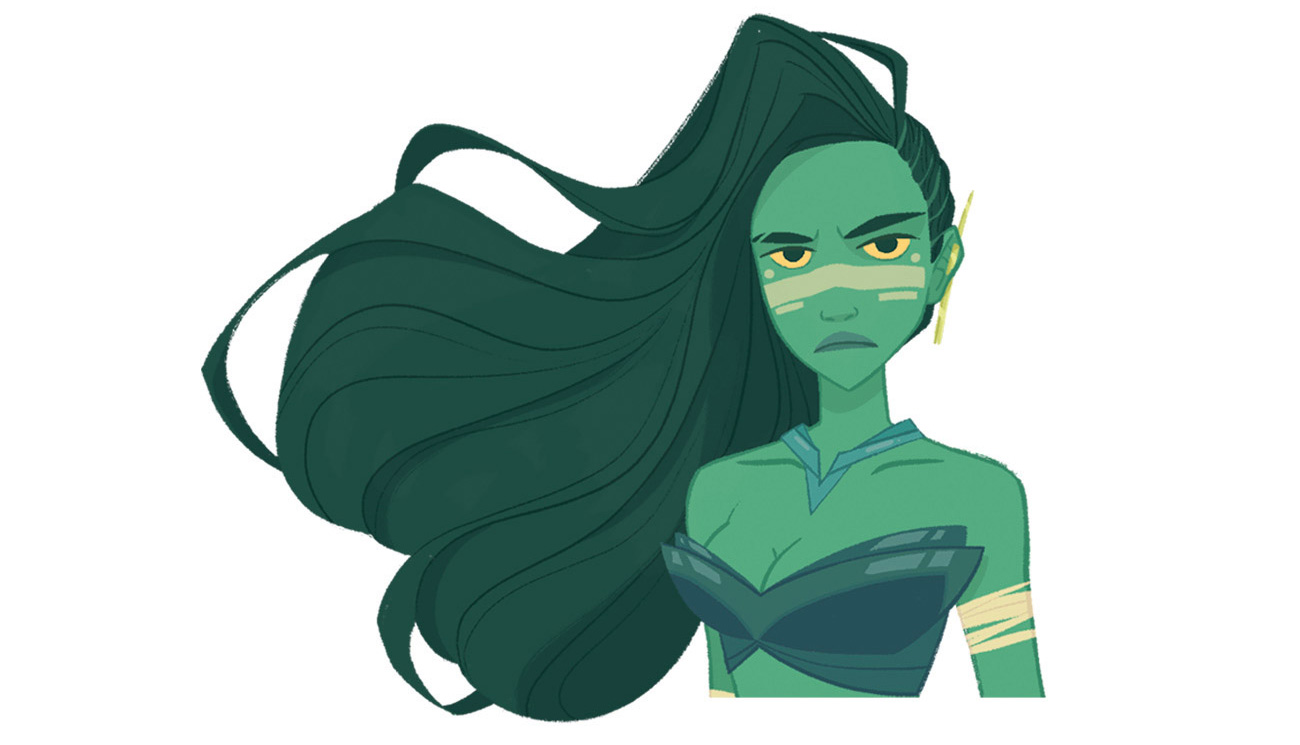
"Some years agone I went from hating drawing hair to loving it," Ørum. "Previously, I used to view working out all the details and directions of the hair as a tedious attempt. Now I call back of it more as a large, organic shape, which like a flag in the wind indicates and emphasises the movement of the graphic symbol or its environment.
"Offset by creating a big shape and split it into shorter sections, while thinking almost where the pilus is parted and where the hairline is. Every line should help to define the volume, shape and direction of the pilus."
17. Add accessories
Props and wearable can assistance to emphasise character traits and their background. For example, scruffy apparel can be used for poor characters, and lots of diamonds and bling for tasteless rich ones. Accessories tin can besides be more than literal extensions of your graphic symbol'due south personality, such every bit a parrot on a pirate's shoulder or a maggot in a ghoul's skull.
- thirty inspiring examples of 3D fine art
Side by side page: More summit graphic symbol design tips...
18. Focus on facial expression
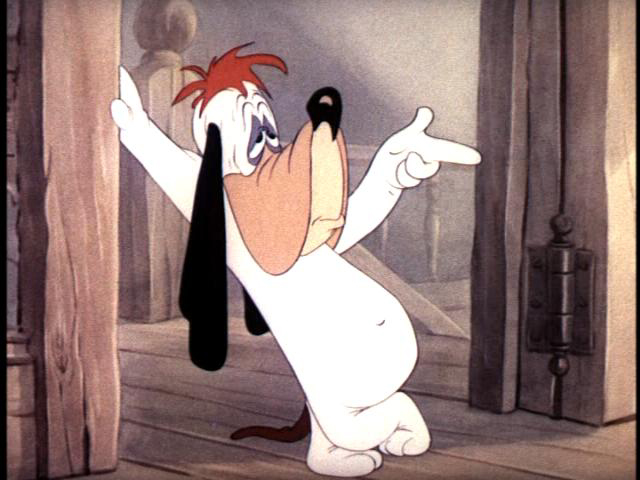
Expressions showing a character's range of emotions and depicting its ups and downs will farther flesh out your character. Depending on its personality, a figure's emotions might be muted and wry or explosive and wildly exaggerated.
"When you lot know the nuts of drawing a face up, play with the expression of the character," says Ørum. "Apply a mirror to read your own face and notice the subtle changes. Button and pull the eyebrows to evidence emotion. Avert giving the face symmetry. The oral fissure will always favours a side and information technology gives life to the drawing. And give the head a tilt to add nuance."
Classic examples of exaggerated expressions can be constitute in the work of the legendary Tex Avery: the eyes of his Wild Wolf character oftentimes popular out of its caput when it'south excited. Another example of how expressions communicate motions is deadpan Droopy, who barely registers whatsoever sort of emotion at all.
19. Give your character goals
The driving force behind a character's personality is what it wants to achieve. This missing 'something' – be it riches, a girlfriend or solving a mystery – can help to create the dramatic thrust behind the stories and adventures your graphic symbol gets up to. Ofttimes the incompleteness or flaws in a character design are what make it interesting.
xx. Build upward a back story

If you're planning for your character design to be inside comics and animations, then developing its back story is important. Where it comes from, how it came to exist and any life-irresolute events it has experienced are going to aid support the solidity of, and subsequent conventionalities in, your character. Sometimes the telling of a character'southward back story can be more than interesting than the character's present adventures.
"If y'all're experiencing issues when attempting to boom the essence of a character, endeavor thinking of them in a certain state of affairs," Ørum advises. "Employ the story to recall well-nigh your character's emotions earlier tackling the pattern, and add together the details later. Setting the scene is the best help when staring at a bare piece of newspaper, and it makes the process more fun, too!"
21. Remember it'southward not all almost the face
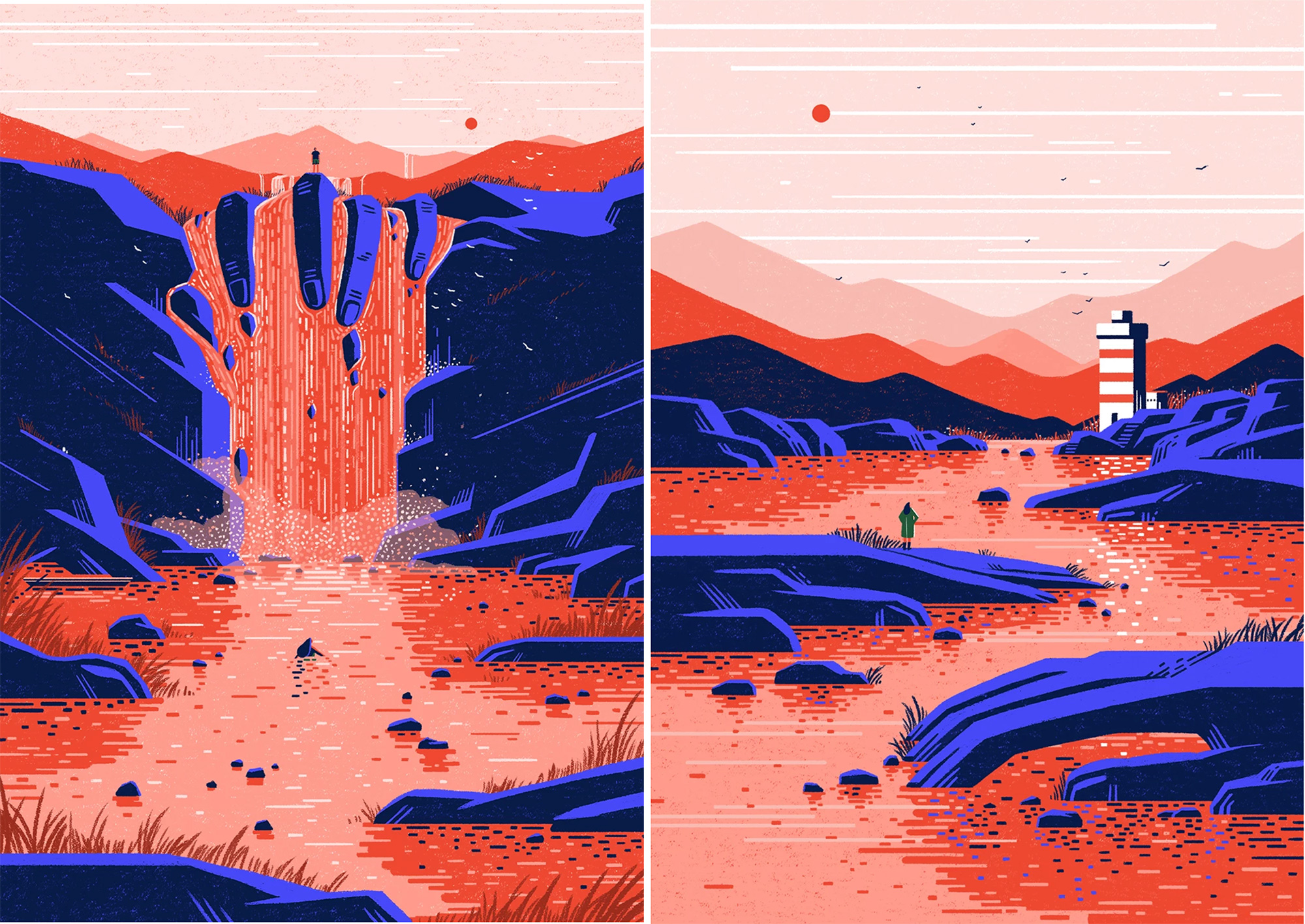
Yukai Du (opens in new tab) is not what you'd telephone call a typical character designer: none of her piece of work features faces. Instead, her torso part of choice is the hands. Having found she wasn't good at capturing specific emotions within a facial expression, she turned to a different body office: the hands. "Hands are very expressive. You can tell a lot of stories with hands, and do it in a very subtle way," she says. Hands became her way of telling stories.
22. Make your character design flexible
Having decent software and materials to work with is useful, but non essential, when it comes to bringing your character to life. A lot of astonishing characters were successfully designed years ago when no one had personal computers and Photoshop CC was only a dream.
If you character is really strong, y'all should be able to capture information technology with simply a pen and paper. Or, as Sune Ehlers (opens in new tab) puts it: "The character should notwithstanding be able to work with a stick dipped in mud and drawn on asphalt."
- Height Photoshop tutorials
23. Go feedback from others
Show people your creations and ask them what they think. Don't merely ask whether they like them or not. Instead, come across if they can pick upwardly the personalities and traits of your characters. Find who y'all think is the suitable or ideal audience for your work and become feedback specifically from them about it.
24. Get in honest
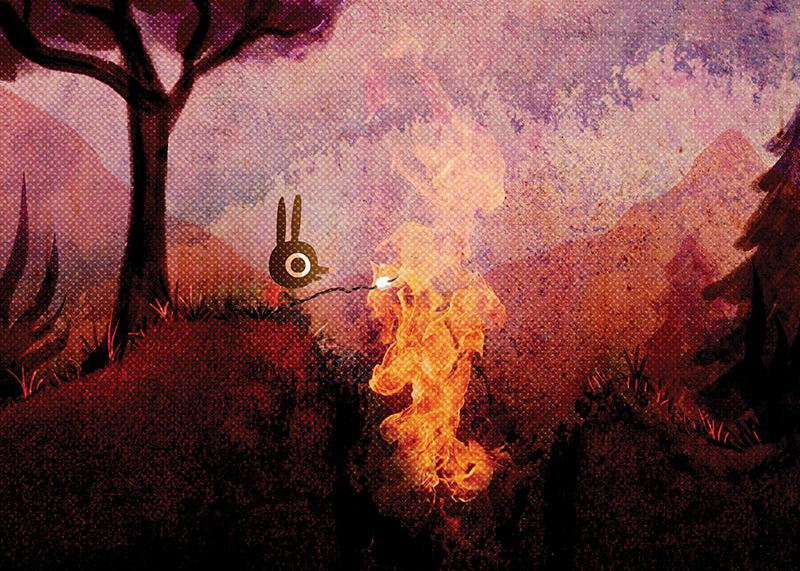
"A lot of my commercial project come out of my personal piece of work. That'southward why I try to make my personal work and so honest to what I like. I call up it comes through to the viewer that I'm not just ticking boxes," says John Bond. The illustrator recently launched his debut picture book, NOT LOST, based on his Mini Rabbit grapheme design.
25. Create the right surroundings
In the same way that yous create a history for your grapheme, you need to create an environment for it to help further cement believability in your creation. The earth in which the character lives and interacts should in some style make sense to who the character is and what information technology gets up to.
26. Fine-tune your figure
Question each element of your creation, peculiarly things such as its facial features. The slightest alteration tin have a slap-up upshot on how your character is perceived.
Illustrator Neil McFarland (opens in new tab) advises: "Recall near the significant of the word 'character'. You're supposed to breathe life into these things, make them appealing and give them the magic that will allow people to imagine what they're like to meet and how they might motility."
27. Don't be afraid to make changes
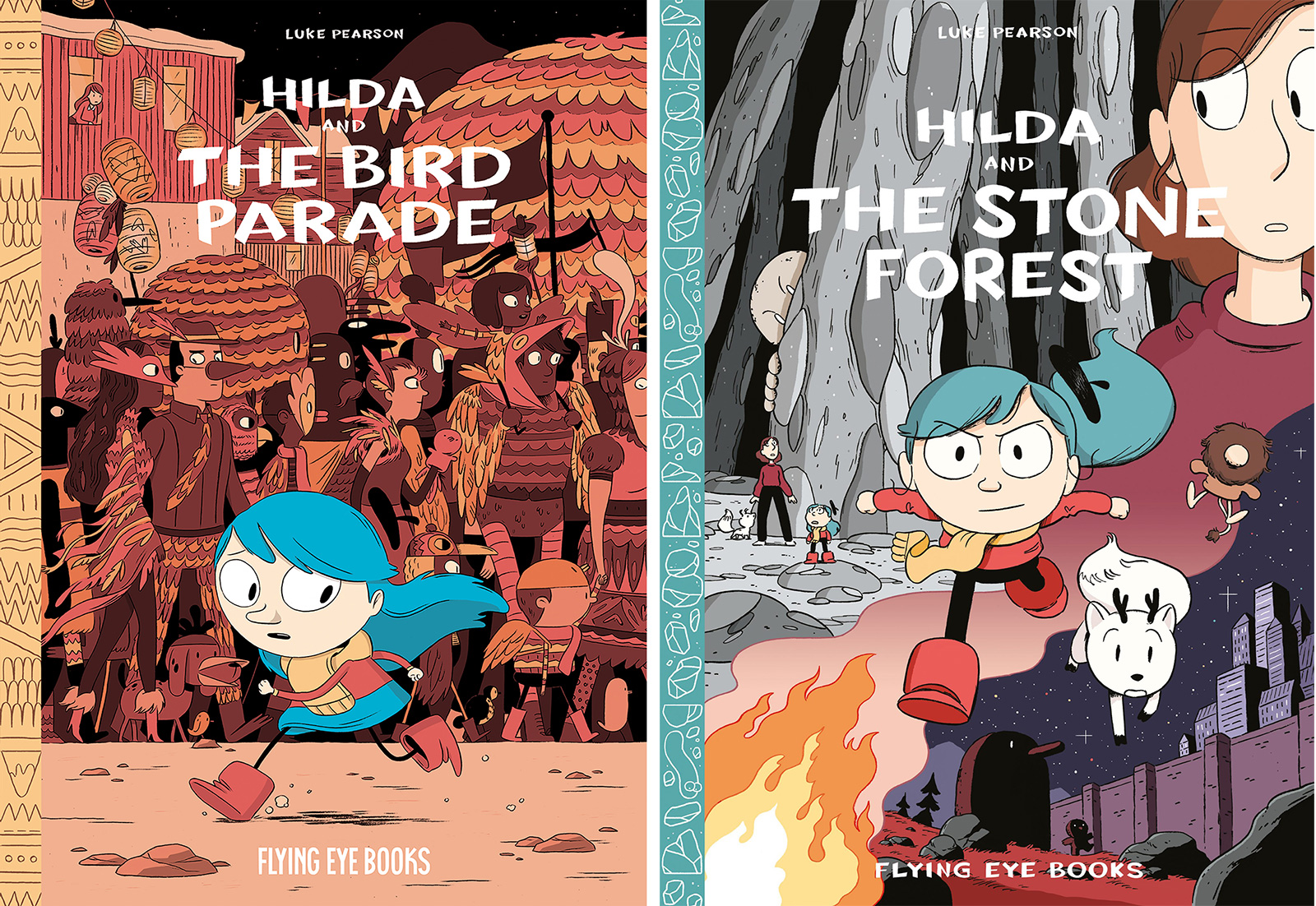
Hilda has changed over the years, from book to volume, but Pearson explains that no one has pulled him up on information technology. "I like to think it means the design is potent plenty to withstand being pulled in all these different directions," he says.
This article contains content that was originally published in Calculator Arts and ImagineFX mag. Subscribe to IFX here (opens in new tab) .
Read more than:
- Best drawing tablets in: Our pick of the best graphics tablets
- Understand Disney's 12 principles of animation
- How to draw a confront

Thank you lot for reading 5 articles this month* Bring together now for unlimited access
Enjoy your first month for simply £one / $1 / €1
*Read 5 free manufactures per month without a subscription

Join now for unlimited access
Try first month for just £one / $1 / €one
Related manufactures
Source: https://www.creativebloq.com/character-design/tips-5132643
Posted by: keaslertheraid.blogspot.com

0 Response to "How Do You Feel About Anime Character Changing Design"
Post a Comment